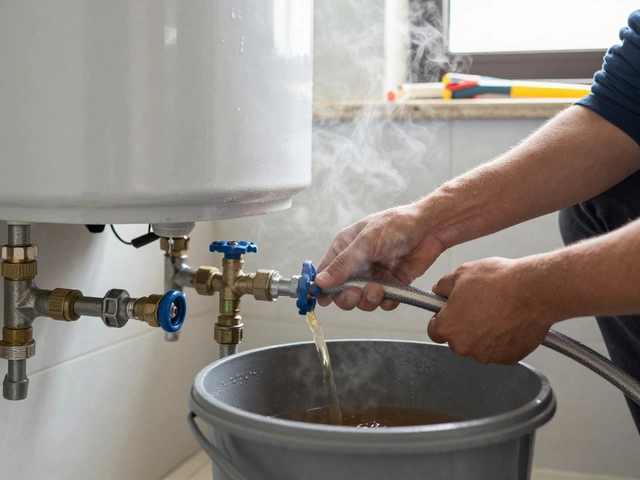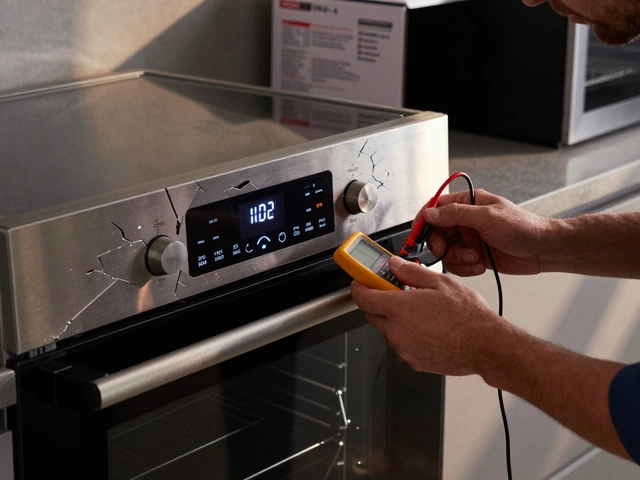Old Oven Troubleshooting: Quick Fixes for Classic Kitchen Appliances
When dealing with old oven troubleshooting, the process of identifying and fixing problems in aging ovens. Also known as vintage oven repair, it helps homeowners keep reliable cooking tools without splurging on a new model. Effective troubleshooting old oven troubleshooting often starts with checking the oven heating element, the metal coil that converts electricity into heat and the oven thermostat, the sensor that controls temperature settings. These components are the most common culprits in older units, and knowing how they work saves time and money.
Why Older Ovens Need a Different Approach
Old ovens were built with simpler electronics, so they lack the smart diagnostics of modern models. That means you often have to rely on physical checks and a bit of intuition. The lack of digital error codes creates a direct link between appliance repair, the professional service that restores functionality to household devices and DIY effort. When you understand the relationship between the heating element, thermostat, and control board, you can pinpoint the failure without calling a technician. For example, if the oven heats but the temperature is off, the thermostat is likely at fault, whereas no heat at all points to a broken element or power issue.
Another key point is safety. Older ovens may have worn wiring or loose connections that can cause sparks or short circuits. Always unplug the appliance before opening the back panel, and use a multimeter to verify voltage. Checking the power supply is the first step before you replace any internal part. This simple safety habit reduces the risk of injury and ensures that the diagnosing process is accurate.
Many homeowners wonder whether a cracked oven door seal or a faulty door latch can affect heating. The answer is yes – if the door doesn’t close properly, heat escapes, making the thermostat work harder and eventually leading to premature element failure. So, while you’re inspecting the heating element, also glance at the door gasket and latch mechanism. A quick replacement of the seal can restore performance without touching the internal wiring.
Once you’ve ruled out power and door issues, it’s time to test the heating element itself. With the oven unplugged, remove the element and look for visible breaks, burns, or corrosion. Use a continuity tester; a healthy element will show a steady beep. If the element fails this test, replace it – most manufacturers sell compatible parts at a reasonable price. Remember that a new element often comes with a brief warranty, adding extra peace of mind.
The thermostat check is a bit more involved. After confirming the element works, re‑assemble the oven and set it to a low temperature. Use a kitchen thermometer to measure the actual interior temperature after the oven claims it’s preheated. A significant discrepancy (more than 20 °F) indicates the thermostat isn’t reading correctly. In many cases, the thermostat can be recalibrated, but older models usually require a full replacement.
Finally, if the oven still refuses to heat after swapping the element and thermostat, the control board may be at fault. This board handles signals between the temperature knob and the heating elements. Visually inspect it for burnt spots or loose connectors. Replacing a control board can be pricier, so weigh the cost against the oven’s overall age. Sometimes, a professional appliance repair, service that specializes in fixing kitchen appliances is the safest route.
All these steps form a practical roadmap for anyone tackling an old oven. Below you’ll find more detailed guides on each component – from cleaning a stubborn heating element to testing a thermostat with a multimeter – so you can choose the right fix without guesswork. Dive in and get your classic oven back to its former glow.
14 October 2025
·
0 Comments
Find out if a 20‑year‑old electric oven can be fixed, learn common failure points, compare repair costs with buying a new model, and get tips for extending its lifespan.
Read more






